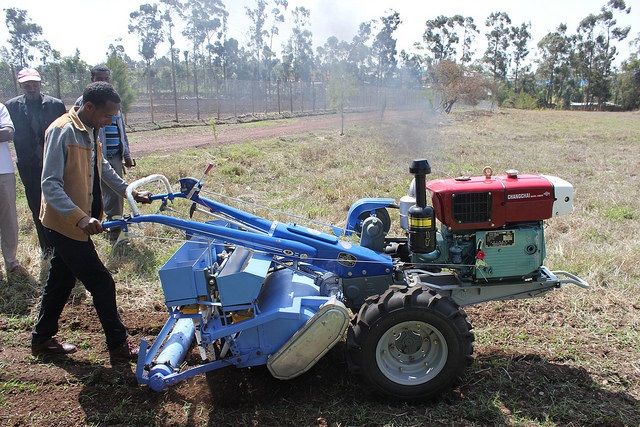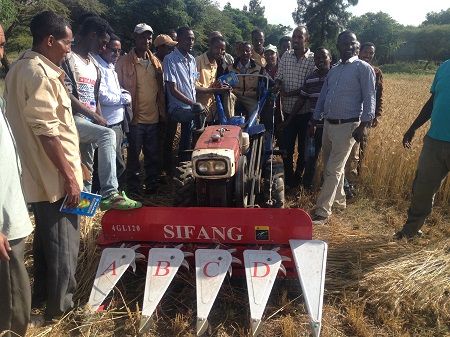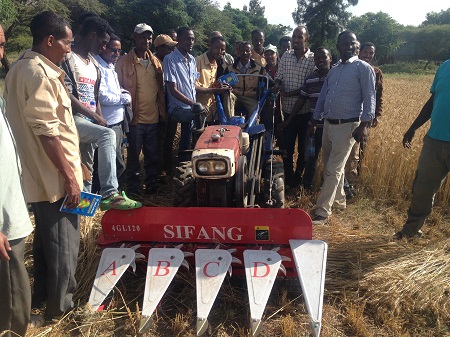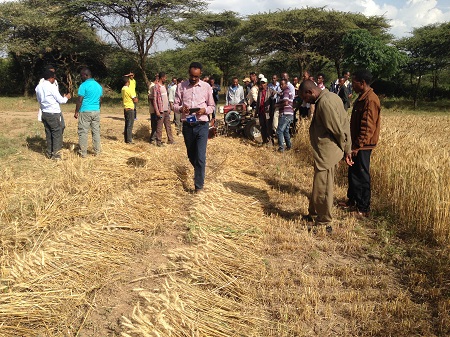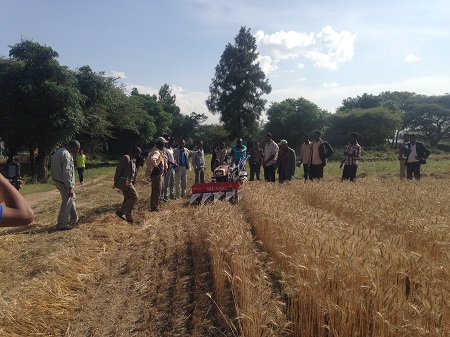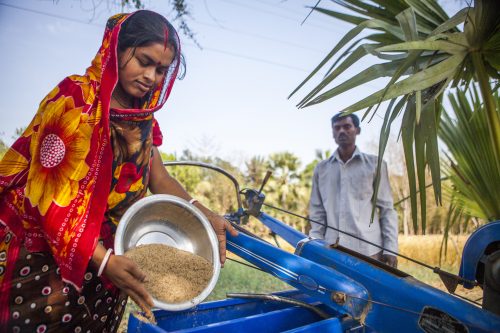Training manual greases the wheels for mechanization entrepreneurs
ROME — A new training manual is set to provide practical guidance for agricultural mechanization entrepreneurs in rural areas, where family farmers commonly lack capital to invest in the farm power required to increase food production.
The five-module training manual targeted at farm mechanization hire service providers, including youth and women, was developed by researchers at the International Maize and Wheat Improvement Center (CIMMYT) and the UN Food and Agriculture Organization (FAO) and official launched July 13 at FAO’s Rome headquarters.
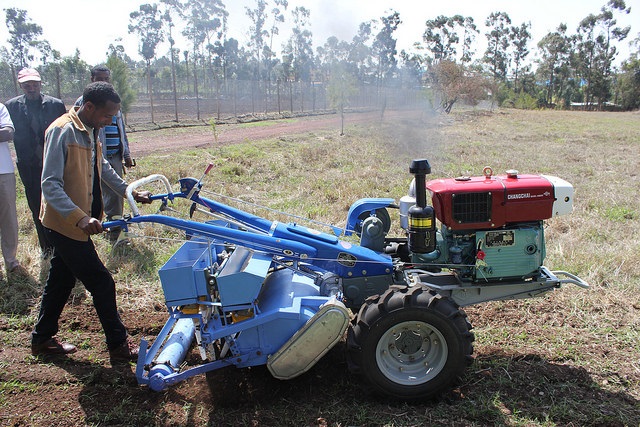
It sets out a syllabus which trainers can tailor to local environments to equip entrepreneurs with essential business skills and knowledge to promote appropriate mechanization farmers need to sustainably intensify production, said Josef Kienzle, an agricultural engineer at FAO.
The manual will initially be rolled out in sub-Saharan African rural communities where improved access to agricultural mechanization is crucial, he said.
Small-scale mechanization, such as two-wheel tractor based technologies including direct seed planters, represent a shift away from destructively intensive agriculture. However, the decline of hire tractor schemes means resource-poor farmers often lack the financial means to obtain them, said Bruno Gerard, director of CIMMYT’s sustainable intensification program.
“To increase the productivity, profitability, and sustainability of their farms, family farmers need greater access to affordable yield-enhancing inputs. Hire service providers can improve access to mechanization that reduces labor drudgery and promotes sustainable intensification practices,” he said.
Sustainable intensification seeks to produce more food, improve nutrition and livelihoods, and boost rural incomes without an increase in inputs – such as land and water – thus reducing environmental impacts.
Sub-Saharan Africa needs sustainable intensification of agriculture. With 224 million people currently undernourished and a population tipped to almost double by 2050, bringing it to over 2 billion people, increasing food production is of the utmost importance.
Despite the need, African crop yields are stagnant with more than 95 percent of farmed land in sub-Saharan Africa rain-fed. Over half of soils are degraded following years of farming without replacing nutrients and low fertilizer use, as most farmers can’t afford it.
“Inclusive mechanization strategies create an enabling environment and provide a framework for making decisions on how to allocate resources, how to address current challenges, how to take advantage of opportunities that arise while in the meantime emphasize the concept of sustainable crop intensification and the roles of the private and public sectors,” said Kienzle. Farm machinery enables farmers to adopt sustainable crop production intensification practices – such as conservation agriculture – that benefit from greater farm power and precision.
The manual will be initially distributed and courses organized through FAO and CIMMYT field projects in sub-Saharan Africa utilizing local trainers and experts in machinery and agribusiness, he said. The manual is expected to be rolled out to other subregional offices and hubs in the future.
Mechanization fuels rural employment opportunity
Increased adoption of agricultural mechanization is stimulating jobs and entrepreneurial opportunities in Africa where youth and women increasingly face severe job insecurity, said Gerard.
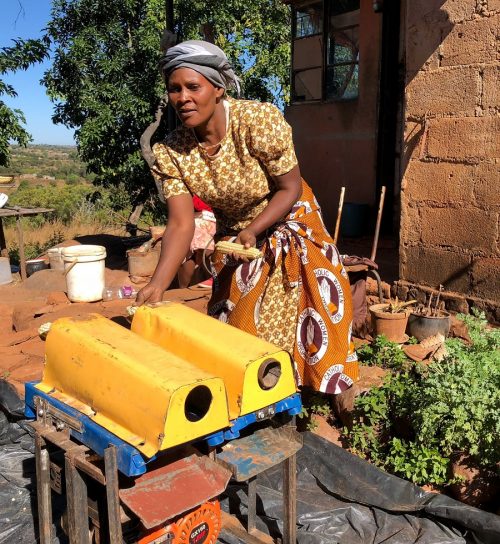
Clara Chikuni, a mother from rural Zimbabwe, has secured a stable income after starting her own mechanized shelling business two years ago. Servicing maize farmers in a 5 kilometer radius of her home, Chikuni has more customers than she says she can handle and has developed reliable employment compared to her previous job buying and selling shoes.
“There is a lot of demand for mechanized maize shelling services. I am happy I can provide a service to the community and make money to support my family,” she said. “I hope with the profits I can move into the two wheel tractor business in the future.”
Chikuni was trained as an agricultural mechanization service provider through CIMMYT’s Farm Mechanization and Conservation Agriculture for Sustainable Intensification (FACASI) project supported by the Australian Government.
“The training and support gave me the know-how and confidence to start my business,” said the mother. “Other women now ask me how I did it and I encourage them to also get involved.”
There is a market for farming mechanization services that can make a big difference for a smallholder farm and help it transition from subsistence farming to a more market-oriented farming enterprise, said FAO’s Kienzle.
Apart from hire services, mechanization creates additional opportunities for new business with repair and maintenance of equipment, sales and dealership of related businesses including transport and agro-processing along the value chain.
The knowledge and expertise of both CIMMYT and FAO combined has made this manual unique and very praxis oriented, focused on smallholder mechanization businesses, he said.
Download the training manual: Hire services as a business enterprise: a training manual for small-scale mechanization service providers
Further information:
Q+A: Agricultural mechanization fuels opportunity for youth in rural Africa
Mechanization fuels rural opportunities around the globe
